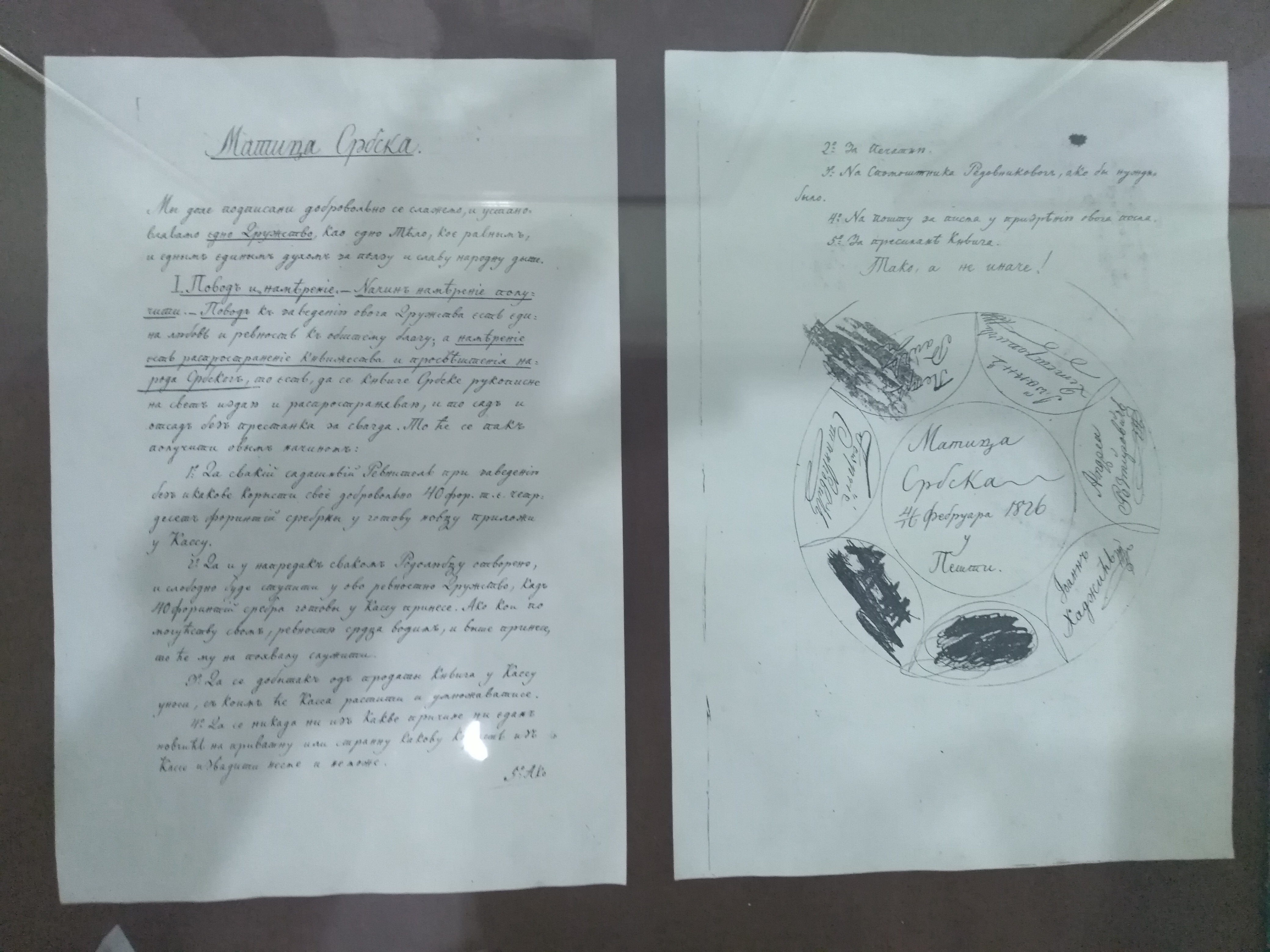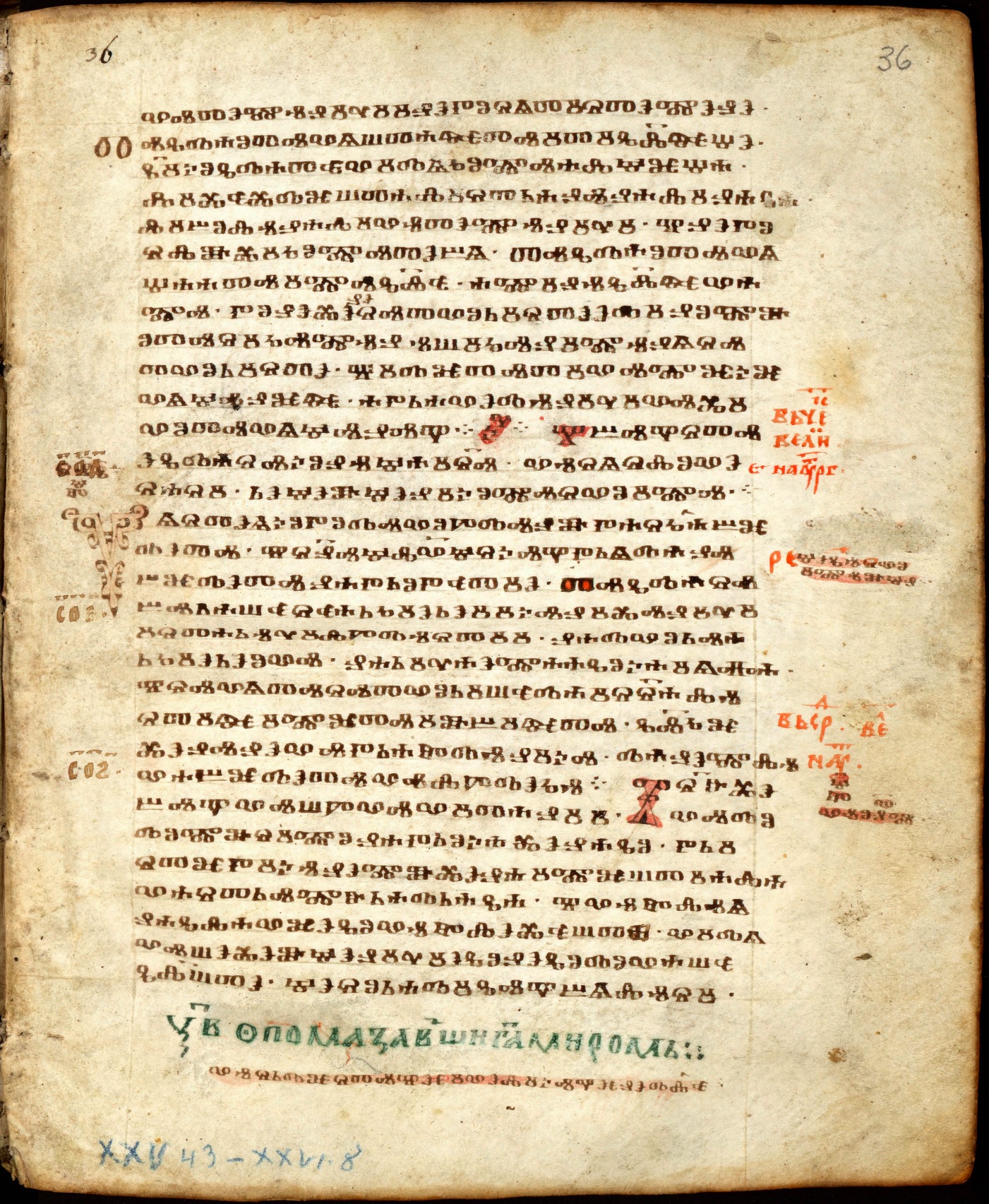|
Manuscript From Temska Monastery
Temska Manuscript ( bg, Темски ръкопис, sr, Темски рукопис/Temski rukopis) is a collection of writings from 1764, compiled by monk Kiril Zhivkovich (1730–1807) in the Temska Monastery near the village of Temska, in Pirot district. The title of the manuscript is ''"Из душевного обреда в’ неделных днех слова избрана. На прости язык болгарскій".'' - ''"Selected words from the weekly spiritual rituals. In simple Bulgarian language"''. The manuscript consists of 232 sheets, where 34 writings are collected. The basic languages of the manuscript are Torlakian dialect and Church Slavonic with some Russian influences. This manuscript is a monument, reflecting the state of transitional dialects between Bulgarian and Serbian in the middle of 18th century. Today this manuscript is stored in the Library of Matica Srpska in Novi Sad Novi Sad ( sr-Cyrl, Нови Сад, ; hu, Újvidék, ; german: ... [...More Info...] [...Related Items...] OR: [Wikipedia] [Google] [Baidu] |
Kiril Zhivkovich
The male name Kiril (or Кирил or Кирилл) is a common first name in the Orthodox Slavic world, in particular in Bulgaria, North Macedonia, and Russia. It is also well known in Greece but in different forms like Kyriakos. (Note that in modern Russian the spelling Кирил is considered to be a mistake, the correct spelling is Кирилл.) Kiril has several variant forms: Cyril, Cyrill, Kirill, Kirillos, Kiryl ( Belarusian), Kyril, Cyryl (Polish), Kyrill, Kyrylo (Ukrainian) and a diminutive Kiro (common in the Balkan Sprachbund). Saint Cyril of Jerusalem was a 4th-century bishop and a Doctor of the Church. Saint Cyril of Alexandria was a 5th-century theologian. Another Saint Cyril, known as Kiril, was a 9th-century translator and a Byzantine missionary to the Slavs. He, together with his brother Methodius, created an alphabet called the Glagolitic alphabet to serve the needs of the Slavic world, translating the Bible into the Church Slavic language. Later, their st ... [...More Info...] [...Related Items...] OR: [Wikipedia] [Google] [Baidu] |
Temska Monastery
Temska is a village in the Pirot municipality, in south-eastern Serbia Serbia (, ; Serbian: , , ), officially the Republic of Serbia (Serbian: , , ), is a landlocked country in Southeastern and Central Europe, situated at the crossroads of the Pannonian Basin and the Balkans. It shares land borders with Hung .... According to the 2002 census, the village had a population of 908 people.Popis stanovništva, domaćinstava i Stanova 2002. Knjiga 1: Nacionalna ili etnička pripadnost po naseljima. Republika Srbija, Republički zavod za statistiku Beograd 2003. References External links Populated places in Pirot District {{PirotRS-geo-stub ... [...More Info...] [...Related Items...] OR: [Wikipedia] [Google] [Baidu] |
Pirot
Pirot ( sr-cyr, Пирот) is a city and the administrative center of the Pirot District in southeastern Serbia. According to 2011 census, the urban area of the city has a population of 38,785, while the population of the city administrative area has 57,928 inhabitants. The city has rich geographical features, including the mountains of Stara Planina, Vlaška Planina, Belava, Suva Planina; rivers which flow through the town, including Nišava, Jerma, Rasnička Reka, Temštica and the Visočica; and four lakes, the Zavoj Lake, Berovacko Lake, Krupac Lake and Sukovo Lake. It also has a rich culture, with notable Orthodox church buildings, including the Church of St. Petka, and the monastery of St. Georges and St. John the Theologian from the late 14th century, both of which display an example of medieval architecture. Pirot is known for its traditional woven carpet, the Pirot carpet (''Pirot ćilim''). Geography The municipality of Pirot covers an area of , with over sevent ... [...More Info...] [...Related Items...] OR: [Wikipedia] [Google] [Baidu] |
Torlakian Dialect
Torlakian, or Torlak is a group of South Slavic dialects of southeastern Serbia, Kosovo, northeastern North Macedonia, and northwestern Bulgaria. Torlakian, together with Bulgarian and Macedonian, falls into the Balkan Slavic linguistic area, which is part of the broader Balkan sprachbund. According to UNESCO's list of endangered languages, Torlakian is vulnerable."Torlak" at Torlakian is not standardized, and its subdialects vary significantly in some features. Yugoslav linguists traditionally classified it as an old Shtokavian dialect or as a fourth dialect of Serbo-Croatian along with Shtokavian, Chakavian, and Kajkavian. Bulgarian scholars classify it as a Western Bulgarian dialect, in which case it is referred to as a Transitional Bulgarian dialect. According to Ivo Banac, during the Middle ages Torlak and the Eastern Herzegovinian dialect were part of Eastern South Slavic, but since the 12th century, especially the Shtokavian dialects, including Eastern Herzego ... [...More Info...] [...Related Items...] OR: [Wikipedia] [Google] [Baidu] |
Church Slavonic
Church Slavonic (, , literally "Church-Slavonic language"), also known as Church Slavic, New Church Slavonic or New Church Slavic, is the conservative Slavic liturgical language used by the Eastern Orthodox Church in Belarus, Bosnia and Herzegovina, Bulgaria, North Macedonia, Montenegro, Poland, Ukraine, Russia, Serbia, the Czech Republic and Slovakia, Slovenia and Croatia. The language appears also in the services of the Russian Orthodox Church Outside of Russia, the American Carpatho-Russian Orthodox Diocese, and occasionally in the services of the Orthodox Church in America. In addition, Church Slavonic is used by some churches which consider themselves Orthodox but are not in communion with the Orthodox Church, such as the Montenegrin Orthodox Church and the Russian True Orthodox Church. The Russian Old Believers and the Co-Believers also use Church Slavonic. Church Slavonic is also used by Greek Catholic Churches in Slavic countries, for example the ... [...More Info...] [...Related Items...] OR: [Wikipedia] [Google] [Baidu] |
Russian Language
Russian (russian: русский язык, russkij jazyk, link=no, ) is an East Slavic language mainly spoken in Russia. It is the native language of the Russians, and belongs to the Indo-European language family. It is one of four living East Slavic languages, and is also a part of the larger Balto-Slavic languages. Besides Russia itself, Russian is an official language in Belarus, Kazakhstan, and Kyrgyzstan, and is used widely as a lingua franca throughout Ukraine, the Caucasus, Central Asia, and to some extent in the Baltic states. It was the ''de facto'' language of the former Soviet Union, Constitution and Fundamental Law of the Union of Soviet Socialist Republics, 1977: Section II, Chapter 6, Article 36 and continues to be used in public life with varying proficiency in all of the post-Soviet states. Russian has over 258 million total speakers worldwide. It is the most spoken Slavic language, and the most spoken native language in Europe, as well as the ... [...More Info...] [...Related Items...] OR: [Wikipedia] [Google] [Baidu] |
Matica Srpska
The Matica srpska ( sr-Cyrl, Матица српска, Matica srpska, la, Matrix Serbica, grc, Μάτιτσα Σρπσκα) is the oldest Serbian language independent, non-profit, non-governmental and cultural-scientific Serbian national institution. It was founded on June 1, 1826 in Pest (today a part of Budapest) by the Serbian habsburg legislator Jovan Hadžić and other prominent members of the Serbian Revolution and National Revival. The Matica was moved to Novi Sad in 1864. It is the oldest matica in the world. The main goals are to restore and promote Serbian national and cultural identity in the fields of art, science, spiritual creativity, economy and public life as well as to care for social development of Serbia. The literary and cultural society played a huge role in the flourishing of science and culture of the Serbs of Vojvodina, Serbia. The need for national homogenization, enlightenment, as well as the publication of Serbian books, were the main reasons for ... [...More Info...] [...Related Items...] OR: [Wikipedia] [Google] [Baidu] |
Novi Sad
Novi Sad ( sr-Cyrl, Нови Сад, ; hu, Újvidék, ; german: Neusatz; see below for other names) is the second largest city in Serbia and the capital of the autonomous province of Vojvodina. It is located in the southern portion of the Pannonian Plain on the border of the Bačka and Syrmia geographical regions. Lying on the banks of the Danube river, the city faces the northern slopes of Fruška Gora. , Novi Sad proper has a population of 231,798 while its urban area (including the adjacent settlements of Petrovaradin and Sremska Kamenica) comprises 277,522 inhabitants. The population of the administrative area of the city totals 341,625 people. Novi Sad was founded in 1694 when Serb merchants formed a colony across the Danube from the Petrovaradin Fortress, a strategic Habsburg military post. In subsequent centuries, it became an important trading, manufacturing and cultural centre, and has historically been dubbed ''the Serbian Athens''. The city was heavily dev ... [...More Info...] [...Related Items...] OR: [Wikipedia] [Google] [Baidu] |
Bulgarian Manuscripts
Bulgarian may refer to: * Something of, from, or related to the country of Bulgaria * Bulgarians, a South Slavic ethnic group * Bulgarian language, a Slavic language * Bulgarian alphabet * A citizen of Bulgaria, see Demographics of Bulgaria * Bulgarian culture * Bulgarian cuisine, a representative of the cuisine of Southeastern Europe See also * * List of Bulgarians, include * Bulgarian name, names of Bulgarians * Bulgarian umbrella, an umbrella with a hidden pneumatic mechanism * Bulgar (other) * Bulgarian-Serbian War (other) The term Bulgarian-Serbian War or Serbian-Bulgarian War may refer to: * Bulgarian-Serbian War (839-842) * Bulgarian-Serbian War (853) * Bulgarian-Serbian wars (917-924) * Bulgarian-Serbian War (1330) * Bulgarian-Serbian War (1885) * Bulgarian-Serbi ... {{disambiguation Language and nationality disambiguation pages ... [...More Info...] [...Related Items...] OR: [Wikipedia] [Google] [Baidu] |
Serbian Manuscripts
This is a list of Serbian manuscripts ( sr, Српски рукописи), containing important works attributed to Serbia or Serbs. The majority of works are theological, with a few biographies and constitutions. The works were written in Cyrillic, except some early works in the Glagolitic script. The number of early Serbian manuscripts, that is, those made before the end of the 14th century, is estimated at 800–1,000. The number of Serbian manuscripts dating between the 12th and 17th centuries that are located outside Serbia is estimated at 4,000–5,000. The largest number of the manuscripts are located in Europe. The largest and most important collection is housed at the Hilandar on Mount Athos. Next, the second largest collection is most likely found in Russia, where hundreds of manuscripts are held. More than a thousand of medieval manuscripts were destroyed during the German bombing of Belgrade (1941). The Digital National Library of Serbia (NBS) has digitalized severa ... [...More Info...] [...Related Items...] OR: [Wikipedia] [Google] [Baidu] |
18th-century Manuscripts
The 18th century lasted from January 1, 1701 ( MDCCI) to December 31, 1800 ( MDCCC). During the 18th century, elements of Enlightenment thinking culminated in the American, French, and Haitian Revolutions. During the century, slave trading and human trafficking expanded across the shores of the Atlantic, while declining in Russia, China, and Korea. Revolutions began to challenge the legitimacy of monarchical and aristocratic power structures, including the structures and beliefs that supported slavery. The Industrial Revolution began during mid-century, leading to radical changes in human society and the environment. Western historians have occasionally defined the 18th century otherwise for the purposes of their work. For example, the "short" 18th century may be defined as 1715–1789, denoting the period of time between the death of Louis XIV of France and the start of the French Revolution, with an emphasis on directly interconnected events. To historians who expand ... [...More Info...] [...Related Items...] OR: [Wikipedia] [Google] [Baidu] |


.jpg)
